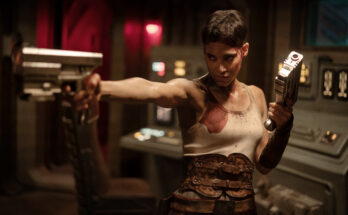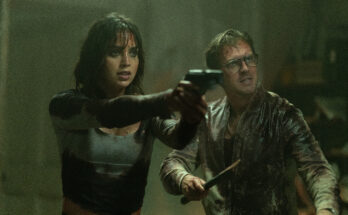Want to hear more from the actors and creators of your favorite shows and films? Subscribe to The Cinema Spot on YouTube for all of our upcoming interviews!
Managing editor & film and television critic with a Bachelor's of Arts in English Literature with a Writing Minor from the University of Guam. Currently in graduate school completing a Master's in English Literature.
Following last weekend’s monster-filled epic episode, this past weekend’s finale of Adult Swim’s Rick and Morty Season 7 falls and tumbles down a dark rabbit hole. Alongside its fourth episode, “That’s Amorte”, the episode continues to peel away at the metaphysics of death as a concept while also peering into themes tied to risk—passion, spirals, and darkness as effects of fear. If the spaghetti episode does not earn itself any awards nominations, then here’s to hoping this one does!
The seventh season finale is titled, “Fear No Mort”. It is written by co-executive producer Heather Anne Campbell and directed by storyboard artist Eugene Huang.
In this review, I will discuss Rick and Morty Season 7 Episode 10. As the title of this article suggests, there will be no spoilers present here. References to previous series episodes may be made!
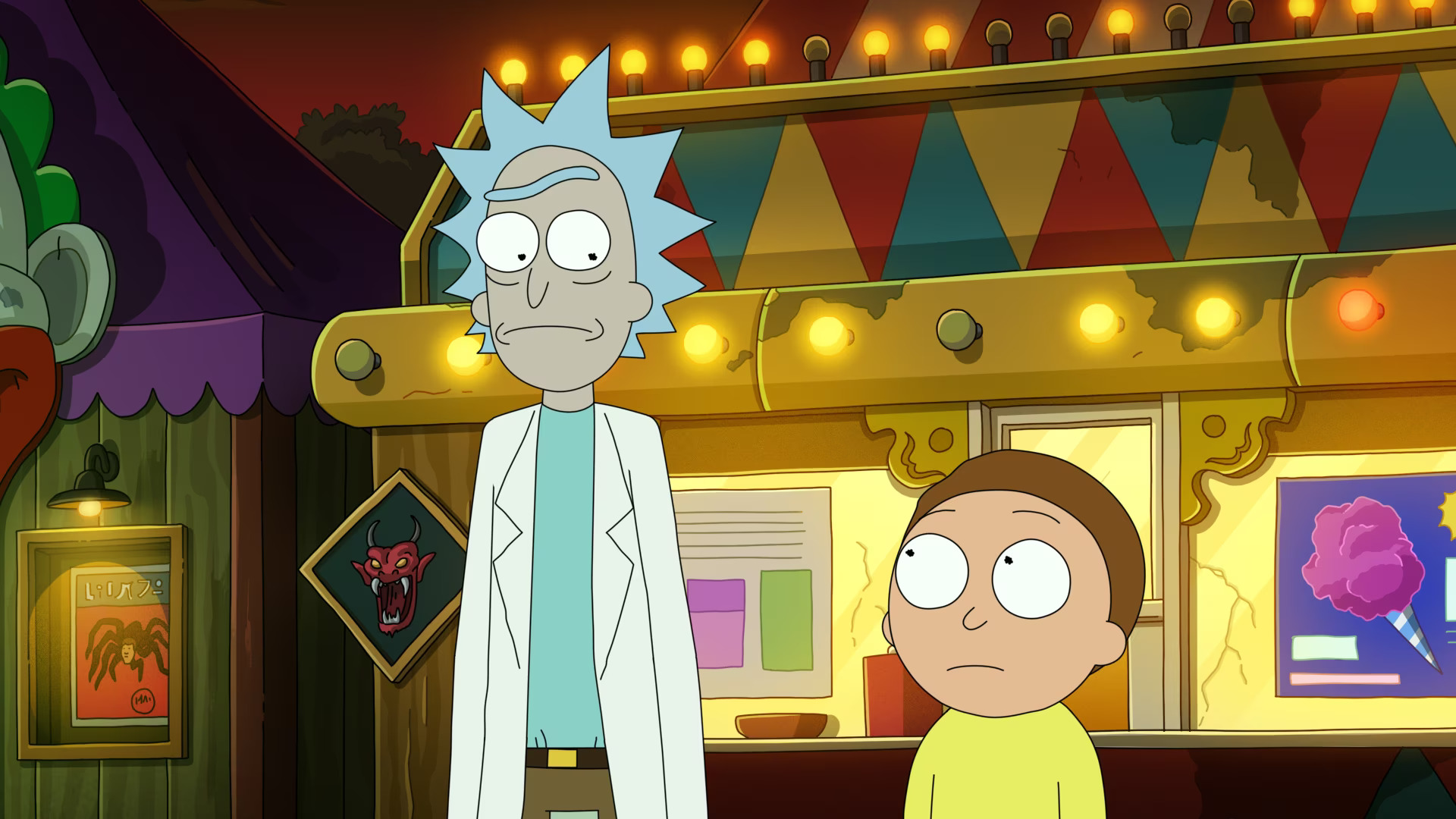
Rick and Morty Season 7 Episode 10 Logline
According to WarnerMedia Press, here is the logline for the Rick and Morty Season 7 finale—“Fear No Mort”.
A jaded Rick and Morty seek spooky thrills.
Only thing to fear is fear itself, broh.
Adult Swim Press
Discussion
Similar to the season’s fourth episode, Campbell writes a truly merit-worthy work of genius. The seventh season finale finds its central characters in a more tenebrous atmosphere than in most other episodes we have seen before. “Fear No Mort” features a black hole in the ground on Earth, its insides lined with what looks to be black hair and seaweed. This isn’t a black hole to play into any sort of innuendo, nor is it a black hole in the sci-fi outer space sense. What fans and viewers get here is a literal black hole. Its grounded aspect should be sufficient to showcase its grounded use of metaphors, rather than going above and beyond in the way that Rick and Morty tends to be.
What’s funny, in a dark humor type of manner, is how the narrative gaslights its audience to the point that questions are constantly asked when explanations to some have already been made, such as in the current midseason finale, “Unmortricken”, and its introduction of “the Omega device”, where it has been elaborated that all traces of Diane Sanchez’s (voiced by Kari Wahlgren) existence has been erased across infinite universes.
Even within this present episode, Rick Sanchez (voiced by Ian Cardoni) treats the spaces within the hole as if some kind of video game. He refers to his family members as “side quests” and “NPCs” (non-playable characters). However, ironically enough, Sanchez himself is revealed to be not real within the hole. As it turns out, Smith was the only person present inside. “Fear No Mort” inserts Sanchez and his grandson, Morty Smith (voiced by Harry Belden), into a simulation to parallel the campiness of Season 1 Episode 4, “M. Night Shaym-Aliens!”, insofar that it is deserving of an award for its writing of fear.
Animation
Sincerely speaking, the episode is dark. From its opening scene, the atmosphere is drenched in fear. When the protagonists first enter the hole, it begins to play out as if something akin to a Junji Ito manga, with formless creatures as horrid as those from Hell. The carnival of nightmares is a necessary location for the story insofar as it is supplemental to the narrative of Sanchez and Smith’s fear of risk. In the backdrop is a yellow/golden jack-in-the-box with a jester around its neck and a smile that can only be described as similar to Bill Skarsgård’s Pennywise the Dancing Clown, and far back into the background behind it is a Ferris wheel that appears as if a death trap.
The Denny’s breakfast food designs are appealing enough, with a plate of a Grand Slamwich looking decent—I cannot tell if those are eggs in that—but other dishes like a Lumberjack Slam, powdered Pancake Puppies, and a Slamburger appear more accurate to what they look like in real life. In terms of the narrative, the diner restaurant location setting feels like it works alongside the idea of a simulation rather than against it. It is a strong callback to the April Fool’s Season 3 premiere episode, “The Rickshank Rickdemption”, a follow-up to “M. Night Shaym-Aliens!”. The 2017 episode follows Sanchez inside of a Shoney’s, which posed as part of a simulation.
A younger, alternate version of Rick Sanchez makes a brief appearance with brilliance. He portals into the Smiths’ living room with Diane in his arms. The character designers created a radical design for him as a piece of the black hole’s darkness. The violet fire that turns him into ash is an exhilarating sight that comes out of nowhere.
Passion Without All the Flame
An unnamed guest character (voiced by Liev Schreiber) cites planet Earth as “the home of the single scariest place in the galaxy”. This is a remarkable declaration to make. It could be argued to not be in reference to the black hole but rather what the hole itself represents. Campbell toys with fears of risk in such a cruel manner that can be held in high regard for those who enjoy that type of humor.
Specifically, Sanchez’s subplot involves passion through the one person whom he holds dear: Diane. The writer uses passion and love as components of risk in certain means that remind me of the late French psychoanalyst Anne Dufourmantelle’s own discussion of the concept in her critical text, In Praise of Risk. Dufourmantelle refers to passion as “the very substance of risk … our capacity to imagine, to be astonished, to be disappointed, impressed, or undone by something inside us that compels us to love”. For characters like Sanchez, there is an overbearingly heavy amount of loss in life, i.e. the loss of close friends and loved ones. It is why he had been selfish for so long in many seasons prior.
As for the young teenage character, passion is a bit different. Dufourmantelle states: “To abandon yourself is to confront abandonment, the fear lurking deep within us that never lets us out of its sight. … Intensity is the leap into the void, the unknown part of ourselves that has yet to be written and yet awaits us, some precise thing”. Smith’s attachment to his grandfather could be an effect of generational trauma. Sanchez was introduced to the series as a father who reconnected with his daughter, her fear of abandonment of him as a parental figure having been passed onto her son.
Spirals and the Uncanny
With passion and love, there is also the cyclical component of spirals within the theme of risk as a concept. The scientist and his grandson confront fear within the hole in such a merit-worthy way that juxtaposes potently with the carnival of nightmares that fails to frighten them. What I appreciate about this episode is how fear fuels the black hole as a constant. Upon encountering the hole, Sanchez asserts they could merely conquer their fear of the hole by walking away from it. Yet, what would a Rick and Morty episode me if refusal is all that happens? The hole, despite whatever occurs within, is a representation of the fear of risk.
As a constant, working with fear instead of against means charging through pain, and not necessarily a physical one at that. Dufourmantelle refers to the spiral as “the movement that seems best to describe our relation to the past and, even more, to trauma”. To take a risk into the spiral means to come out uncanny while the past becomes a vanishing point. The characters’ travel through that which pains them in life is transport, or a metaphor. Dufourmantelle explains a metaphor “invents a space of meaning that didn’t exist beforehand”. Think of a caterpillar forming a cocoon so it can turn into a butterfly. It is self-destruction that also serves as transformation.
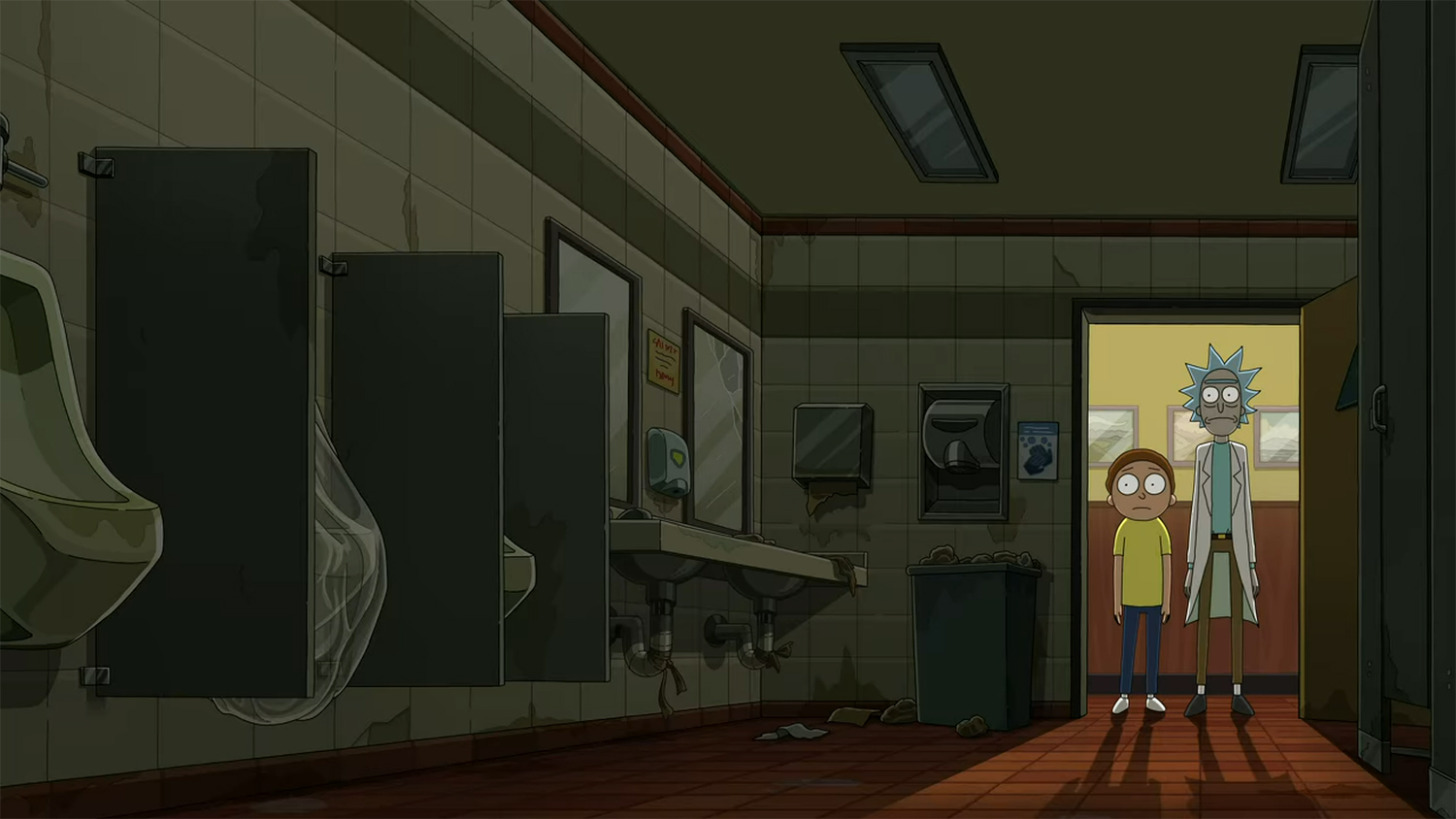
If You Dare
Sanchez and Smith constantly pick at their various fears—the former’s fears of a romantic comedy with Diane, of letting go, of Smith knowing anything before he can, of feeling certain then being proven wrong, of capitalism winning, the latter’s fears of watching rejection, of never exiting the hole due to Sanchez’s disclosure of his own fear, and ultimately, of not being rescued out of any hole by his grandfather. It’s laughable for Sanchez to think that reuniting with Diane will make Smith lonesome, especially with Smith’s response “My greatest fear is you hooking up??” to the insulting remark.
More so, the fear of taking the risk of passion is not one to be dismissed. There is beauty within the darknesses both of company and of loss that the characters learn to embrace. Not only that but there is also some truth in the statement that happiness is temporary. That is the sweet nihilism of life. Nothing matters except for life itself, and we must work together to make life happen. The spiral consisting of smaller spirals here is Smith working through his fears as a biological product of Sanchez, who holds so much fear as it is.
New Meaning, New Purpose
The small details serve as metaphorical reminders to viewers of what is uncanny, or in other words, different yet familiar as part of the return from the spiral. The Cake or Fake? television program playing in the living room is a callback to the current season’s seventh episode, “Wet Kuat Amortican Summer”. In this present episode, the fictional TV series presents new meaning. This time around, it begs the audience to look within and search for authenticity, much like the spaces of the Denny’s black hole. Even the waffle robot that Sanchez sends to Diane is an allusion to the “purpose” pancake robot from the premiere season’s penultimate episode, “Something Ricked This Way Comes”.
Rick and Morty themselves take on new appearances, which is not new to the series. However, the episode itself highlights that they have been going through uncanny changes throughout the seasons’ story arcs. For example, Sanchez’s addiction to the Anti-Aging Serum or the present-day version(s) of Sanchez who’s lost Diane exhibits the character in a way that implies vast change, along with their refusal to accept it. In terms of the season and its finale, this signals a turning point. This is a transition for the character from a revenge plot to whatever happens next.
The montage of Sanchez growing older and the musical lyrics sung in the background exhibit what audiences are familiar with about the series and how its characters’ lives could demonstrate something new. For a few brief moments, it is one of the best sequences to be animated from the teleplay page. It is a meta-commentary that acknowledges the “What else is new?” remark that fans may have for the show.
Darkness
The spaces within the black hole itself provide answers to what the darkness means. According to Dufourmantelle: “The night is our truth”. To envisage (or foresee, anticipate) darkness is to admit that nonsense is the entire opposite of logic and reasoning. The late psychoanalyst states: “[I]n our relation to chance, death, time, love, and especially to our birth, we must confront a degree of absurdity that will never be resolved in any system of knowledge, any given order, any secret, or any conspiracy”. If this is true, then what comes next—after risks of passion, of spirals, of darkness, and others—is revolution.
Do we know for sure if revolution is making its arrival, or has it already occurred? Still, what Campbell has done to this episode as its writer is tragic poetry. With that, there is also levity within the pain, and I cannot commend it enough!
The Crew Behind Rick and Morty
Rick and Morty is co-created by Dan Harmon (Community).
The series’ main theme and score are done by Ryan Elder. Hunter Curra serves as the supervising sound editor.
Wes Archer is the supervising director. Alex Song-Xia and Cody Ziglar are story editors. Grace Freud is the staff writer.
Jeremy Gilfor is the writers’ assistant. Michael Kellner and Jax Ball are 2nd writers’ assistants.
Claire Levinson serves as the editor. David Seger is the assistant editor.
Ruth Lambert and Robert McGee are the voice casting directors. Katelyn Semer and Amanda Ray are casting associates. Sara Jane Sherman is the additional casting director.
Amy Chapman and Nick Reczynski are voice-over consultants.
Animators
James McDermott is the art director. Philip Vose serves as the assistant art director. Carol Wyatt is the color supervisor.
Adam Burnier is the character design lead. Liza Epps is the background design lead. Brent Noll serves as the prop design lead. Kelly Yoo is the assistant prop design lead.
Rufino Roy Camacho II (Futurama, Sausage Party, Disenchantment, Harley Quinn), Heather Langley, Dan O’Connor, and Steve Yurko (Robot Chicken, HarmonQuest) serve as the storyboard artists.
Bismarck “Butch” Datuin, Sander Goldman (Big Mouth), LaVon O’Bannon, and Joe Wierenga are additional storyboard artists.
Sam Brumbaugh, Alexa Hanson, Kari Kilpela, Maneen Mehta, Byron Merrill, Elisa Phillips (The Venture Bros., HarmonQuest), Amy Sherrier, Ken Siu, and Tony Weinstock are the character designers.
Jackie Cadiente and Paige “PJ” Hankins work on the character design clean-up.
Sean Bodley, Chris S. Bolden (The Simpsons, Disenchantment), Phillip K. Burrows Jr., Vance Caines (Regular Show, Close Enough), Daniel Chiu (The Simpsons, Solar Opposites), Leasa Epps-Eisele, Kevin Chiya Kuan, Kelsey Liggett, Betsy Luk, Alex Steven Martin, Erik D. Martin, Tommy Scott, Alycea Tinoyan, and Tuo Tsui work on the background design.
Cyndee Guerrieri, Tyler Justice, and Ashley Nolley work on the background clean-up.
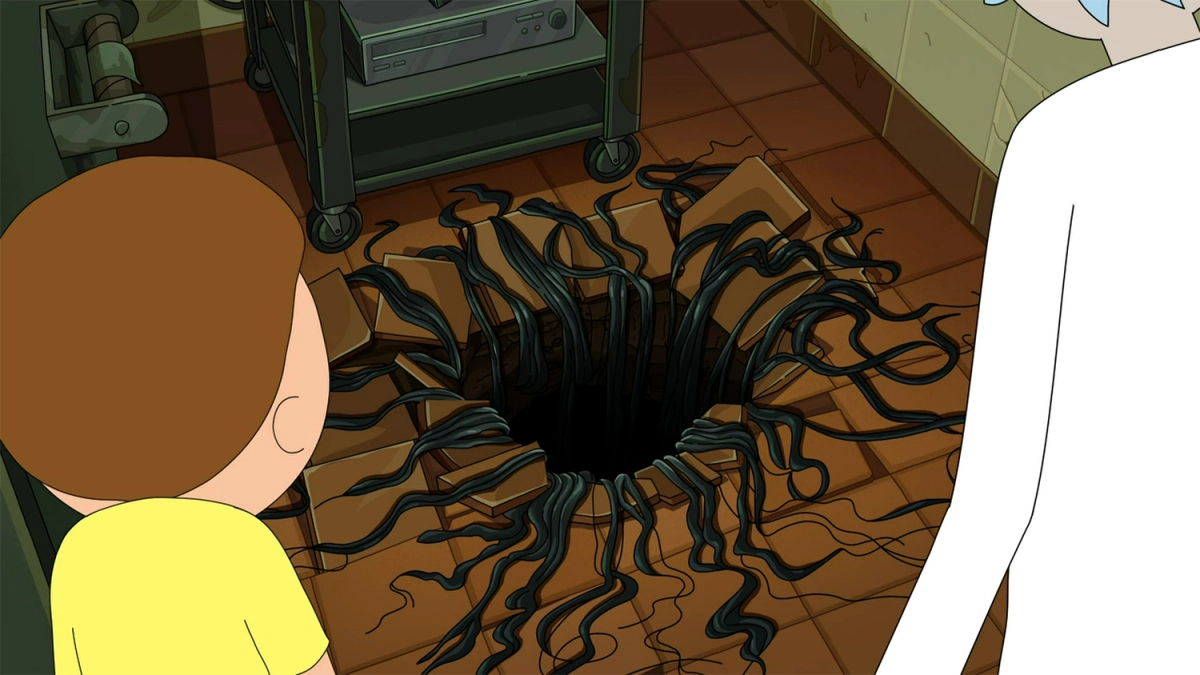
The Voice Cast Behind Rick and Morty
Ian Cardoni voices Rick Sanchez, the genius scientist of the series. Harry Belden voices Morty Smith, the teenage grandson of the series.
Spencer Grammer voices Summer Smith, Rick Sanchez’s granddaughter and Morty Smith’s older sister. Chris Parnell and Sarah Chalke (How I Met Your Mother) voice Jerry and Beth Smith, Summer and Morty Smith’s parents.
Liev Schreiber (the Scream franchise, Spider-Man: Into the Spider-Verse, Asteroid City) guest stars as the voice of the unnamed antagonist. Adult Swim Press refers to/ credits him as “The Man in the Suit”.
Jon Allen voices Mr. Poopybutthole, a long-time character of the series. Kari Wahlgren voices Diane Smith, Rick’s late wife/ Beth’s late mother. Eric Bauza, Ryan Elder, Nolan North, Alicia Marder, and Maurice LaMarche (Futurama, Codename: Kids Next Door, Disenchantment, The Vindicators) also make voice appearances.
Voice Performances and Character Developments
Cardoni and Belden deserve the credit for taking on the voice roles of Rick and Morty, respectively. During this season, so much has happened. Yet, this finale absolutely did wonders on top of what I thought would be my favorite episode, “That’s Amorte”. Fans might recognize Sanchez for being fearless and Smith for being fearful. “Fear No Mort” marks a change for Morty Smith and the fear and anxiety that he holds. Everything about this episode seemed confusing, but the intricacies pieced together the answer to the puzzle. Frankly, it was nice to see that the simulation was all about Smith. Acceptance and growth are vital components of living, whereas the absence thereof leads to detrimental destruction.
Schreiber as the Man in the Suit, a self-proclaimed “connoisseur of fear”, makes for an enticing antagonist for the episode and perhaps for future episodes if the writers continue to involve him somehow. He does not necessarily seem like a villain, yet I do love how his work agonizes the main characters. As a voice actor, Schreiber delivers well-written monologues despite his brief time on screen. His speech about the risk of passion is one of the best words I have heard in the season. I don’t think much else beats it.
Final Thoughts on the Rick and Morty Season 7 Finale
Strikingly similar to Donald Glover’s Atlanta series finale last November, “Fear No Mort” is primarily a dark episode. Although, the sprinkles of hilariousness are what add flavor to the narrative. Sanchez’s list of “Top 5 Things Morty Likes About Jessica” is concerning albeit dumbfoundedly funny. The wordplay in the final act is delivered splendidly. Sanchez’s line, “[Are] you holding out on me?” during the final scene strikes with subtle excellence. The scene itself knows how to wrap the season nicely and just in time for the holiday season. I also think that this is a type of episode that would have aired during the month of October due to the darkness that is portrayed.
Elder’s musical scoring and his song, “Time and Tide” is such a compliment to the episode. The composition helps speak of the pains of love and time, along with the thresholds that must be crossed over. Importantly, the lyrics are noteworthy as they convey the message of overcoming grief. The episode also acknowledges that, despite traveling across different dimensions, time travel has never been an option. The concept has been done too much across popular cultural media. It might not feel like a huge thing if it ever does happen.
Final Thoughts on Rick and Morty Season 7
This episode also marks the return of Mr. Poopybutthole (voiced by Jon Allen). In the end tag, he uses a stolen portal gun to enter a new dimension to replace that reality’s Poopybutthole as the patriarch of the family. For some reason, I have a feeling that the future of the series will involve the Smith family atoning for the indirect death of Slow Mobius and the direct domino effect of Poopybutthole’s downfall. Nonetheless, the series’ seventh season was just as great as its sixth in terms of the stories that were told and the messages they delivered. Rick and Morty is onto something wildly perfect now, and I cannot wait to see what that is.
Rick and Morty Season 7 is now airing on Adult Swim via Cartoon Network. The season will stream via Max (formerly HBO Max) next year!
Have you seen the series yet? If so, then what are your thoughts on it so far? Let us know! For more adventure, animation, comedy, and science-fiction-related news and reviews, do not forget to follow The Cinema Spot on Facebook, Twitter, and Instagram!
Do you love Rick and Morty and/or want to catch up on the series? Add Seasons 1 through 5 to your Blu-Ray collection today!
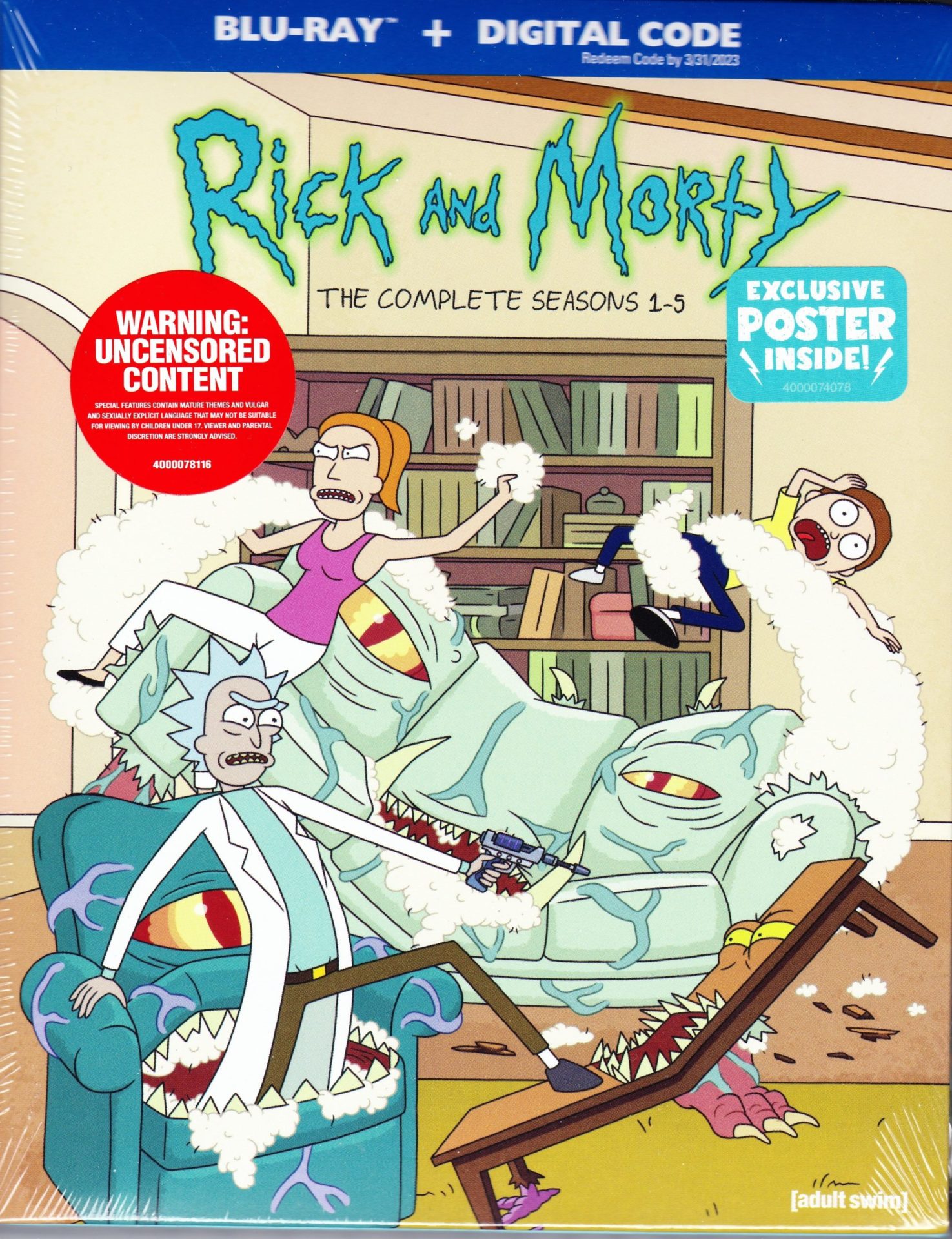
Add Season 6 to your Blu-Ray collection as well!
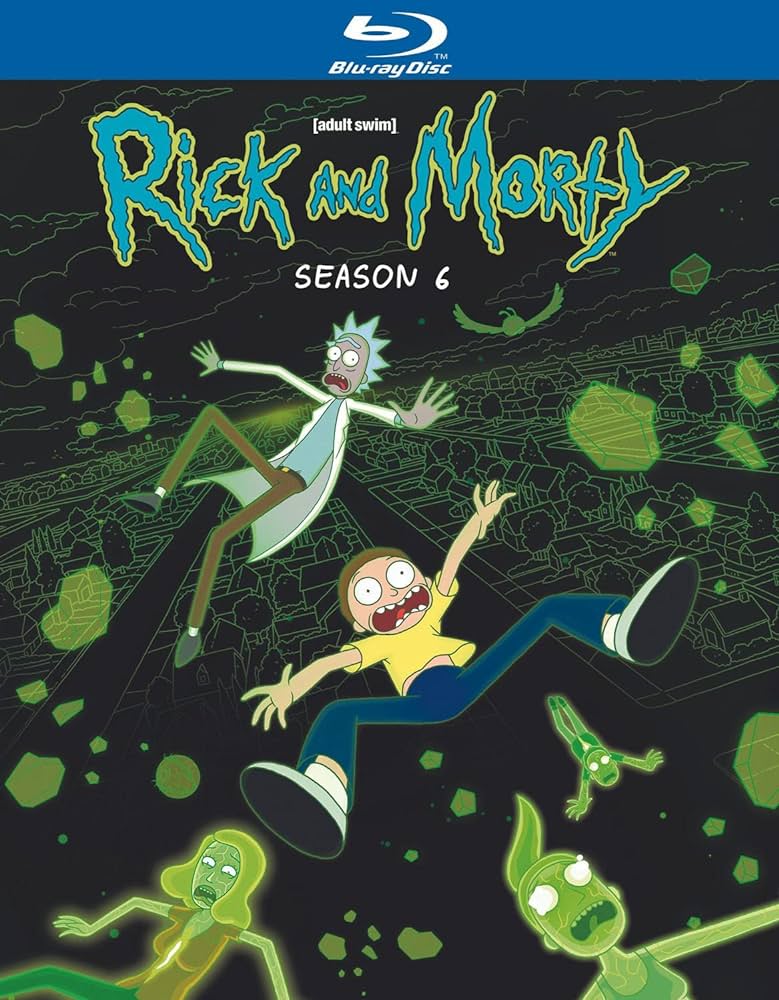
Managing editor & film and television critic with a Bachelor's of Arts in English Literature with a Writing Minor from the University of Guam. Currently in graduate school completing a Master's in English Literature.


